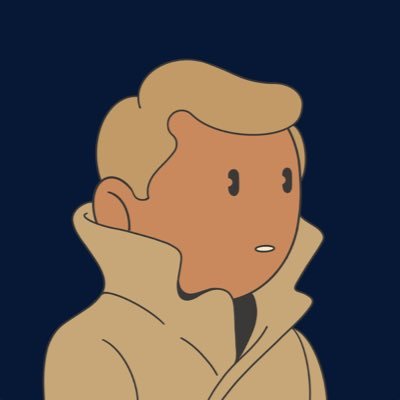About Blotter

Blotter is an artist driven by a love for making things and a journey of exploration. His passion began with a childhood love for drawing that led to discovering digital collage in middle school. This path took him to study design in college and, after encouragement from friends, into the NFT space in 2021.
Blotter’s style has evolved significantly, and he intentionally keeps this full journey public on one account. He believes his growth is "nothing to hide; it's a story I'm proud to share."
His current style emerged from a desire to slow down. After feeling the NFT world was "too fast and complicated," he shifted focus to making art that is "simple and easy to understand, but also beautiful to look at and feel." He aims for his work to be "something pretty and sweet" that allows people to "forget their problems for a moment."
An interview with Blotter led by Carlo Borloni


Your artistic journey is unusually transparent, you’ve kept your entire evolution public, from your earliest experiments to your current works. How does this openness shape your relationship with your audience?
Being transparent about my whole artistic evolution has made my relationship with my audience feel genuinely real and warm. I often bounce ideas off them when I'm deciding to experiment with something new I want to develop. Honestly, I'm just so grateful that they've always been supportive, giving me valuable advice, input, and even criticism for what I'm trying to do. I don't worry if some people might see me as inconsistent, because I have so many people who believe in and support my artistic journey.


You’ve described the NFT space as “too fast and complicated.” How did that sense of acceleration influence your shift toward simplicity and emotional clarity in “Cursed Tribe”?
Oh, definitely. That "too fast and complicated" feeling in the space absolutely played a part. It really made me want to strip things back to something more fundamental and honest. "Cursed Tribe" is, at its core, pretty simple. Plus, it just happened to be October, and I just felt we needed something spooky! Lately, most of my work has been really sweet and like "angelic", so this collection felt special, it's dark, not just for the "spooky" season, but I also really wanted to create something different for this drop with Ninfa.


The collection’s masks feel both ritualistic and technological. Were you inspired by any particular traditions, myths, or visual languages in designing them?
Yes! For the big-picture theme, I was definitely inspired by "Majora's Mask" from The Legend of Zelda, that whole idea of a cursed item that causes chaos and destruction. And for the actual visuals, I also pulled a lot of inspiration from games, especially the look of Hollow Knight and some of the armor helms from Elden Ring.


The use of black, white, and crimson forms a striking symbolic grammar. How did you arrive at this minimal yet powerful palette?
Honestly, there's no real secret or special method to how I landed on this minimal yet powerful palette. If you look at my previous work, you'll see I've almost always used these same colors. The main difference is just which color dominates. This time around, I'm using a lot more deep black to really emphasize that "dark" aura. I'm using less red, but making sure it's "on point" just enough to catch the viewer's eye and deliver a stronger visual message.


Each portrait feels like an archetype, yet deeply personal. Do any of these “curses” stem from your own experiences or emotions?
It really goes back to my previous answer. I have to balance my own feelings first when I'm thinking about the visual I want to achieve. If an idea feels too excessive or too complex, I'll adjust it. As artists, we obviously want to make things better and more perfect, and we often try to do that by adding a lot of extra details that aren't really necessary. In my opinion, the real key to balancing it all was just a sense of "enough" Knowing when to stop is what keeps the entire collection coherent.


You’ve called the project a “catalog of afflictions.” How did you approach balancing psychological depth with visual coherence across fifty works?
Yes, some of them are definitely drawn from my own experiences and emotions, but I don't make it obvious. When portraying those emotions, sometimes I'll make them hyperbolic by really exaggerating them while other times I'll do the complete opposite and deliberately understate them. It all just depends on what I need to do to achieve the visual I'm aiming for.


There’s a sense of confrontation in these images, the viewer cannot look away. What role does discomfort play in your work?
This goes right back to my main inspiration, Majora's Mask. I wanted to capture the exact same sense I get from it. From the first time I saw that mask until now, I've always thought it was beautiful and cool. At the same time, the longer I look at it, the more uncomfortable I feel. But no matter what, I still absolutely love it. So for Cursed Tribe, I wanted to evoke that exact same feeling. That's the role of the discomfort, it's that specific sensation I get when I stare at Majora's Mask.


In your view, what connects this “tribe” to our own society? Do you see the masks as metaphors for the identities we construct online?
I think the connection is about how all of us, as people, have our own life problems and burdens that come from incredibly diverse and unique backgrounds. As for the masks being a metaphor for the identities we build online, I’d say it’s both yes and no. It’s no because this isn't just an online phenomenon. In the real world, most of us are constantly suppressing or hiding something inside. The mask is just like a 'passive item' that we automatically equip before we go on and face our daily lives.


You often speak about art as something “beautiful and simple, something that makes people forget their problems.” How does Cursed Tribe fit within that philosophy, given its darker undertones?
That's a great question. In my philosophy, "beautiful and simple" isn't something that can just appear unconditionally. I believe it needs a "condition" or a prerequisite to exist. And for me, Cursed Tribe is that condition. It's the necessary groundwork. It's the reason that will allow for something truly beautiful and simple to come next.


Finally, what do you hope the viewer takes away after facing these portraits, fear, empathy, reflection, or perhaps recognition?
Out of all those options, I hope that people will just see it and think, "Wow, this is cool" And then, after that initial thought, perhaps they start connecting it to things that have happened in their own lives. I'm happiest when people look at my work and are able to form their own personal interpretation of it.

Sign up for our newsletter to keep up with the latest news from NINFA
Sign up for our newsletter to keep up with the latest news from NINFA
Write us at: info@ninfa.io, or click here if you need support
Copyright © 2025 Ninfa Labs - 12094240962 - All rights reserved

